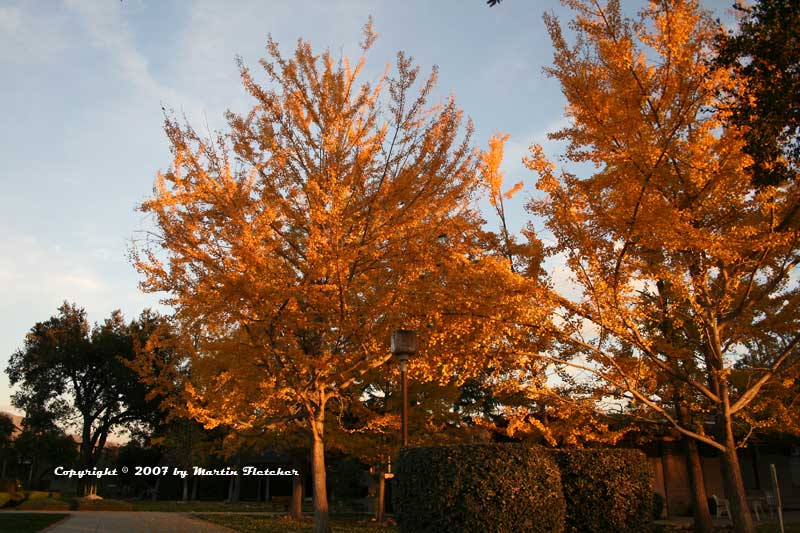Ginkgo biloba - The Maidenhair Tree
It was thought by western scientists until fairly recently that Ginko biloba tree was extinct. Only fossils had been found here in North America. In the early part of this century it was introduced to western horticulture from China. It is a primitive conifer. An extract from the leaves or seeds is used medicinally for memory improvement and a wide variety of other ailments. Though my Dalmatian, who ate my first tree, seems to have gained nothing in the process. He still doesn't do what I tell him. The Ginkgo biloba leaves are collected as they turn yellow. The leaves are dried and pressed into bales. The desirable flavinoids are chemically extracted and concentrated into pill form. The medicinal effects are primarily cause by increased circulation. More oxygen to the brain, better thinking, or so goes the logic. There are studies linking a potential problem between consumers of aspirin or other blood thinners and Ginkgo biloba. Their blood thinning properties may be additive, use caution. The seeds are separated from their gelatinous outer skin and eaten.
(If you have a recipe for the food preparation of the seeds I would be very pleased to receive it. With your permission, I would also be happy to publish the recipe here, giving you credit of course.)
In the landscape I like the light that is transmitted through the leaves. The leaves shed a pale shadow, seemingly producing an interesting glow, giving the space under the tree an airy feeling. It is a great tree for fall color. It turns a golden yellow and the leaves stay on the tree for a long time, then make a golden carpet. When the Ginko Biloba leaves are ready to go they all fall within a few days. I think this is the perfect tree for fall cleanup. When the leaves start to go it almost looks like a golden rain is falling.
The Ginkgo biloba trees can be very slow growing until they get established. At my house it took 10 years to for the tree to get taller than I am. Now it is growing 6 feet per year or more. The fruit, or outer seed coating from a female Ginkgo biloba tree can be quite a nuisance if it is not cleaned up. It smells wretched as it rots. The best trees for most landscape uses are grafted from select male plants (no rotting fruit). I have seen beautiful Ginkgo bonsai specimens, both as groves of trees and single individuals.

Fall color on a grove of Ginkgo biloba Trees. High resolution photos are part of our garden image collection.
Other trees that reliably produce Colorful Fall Foliage in our dry climate:
Cotinus coggygria
Liquidambar Burgundy
Pistacia chinense
